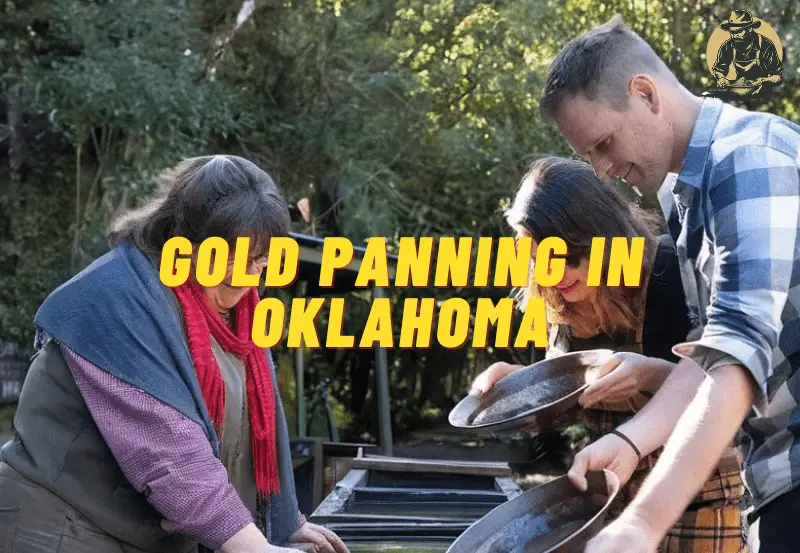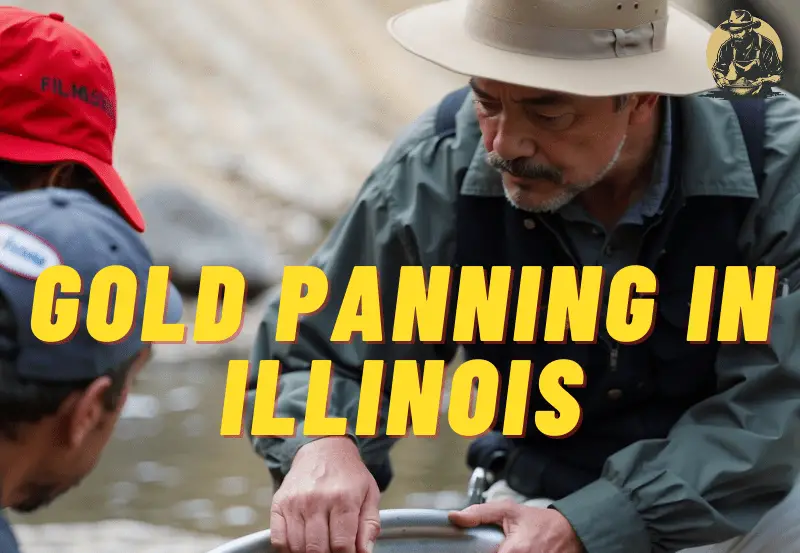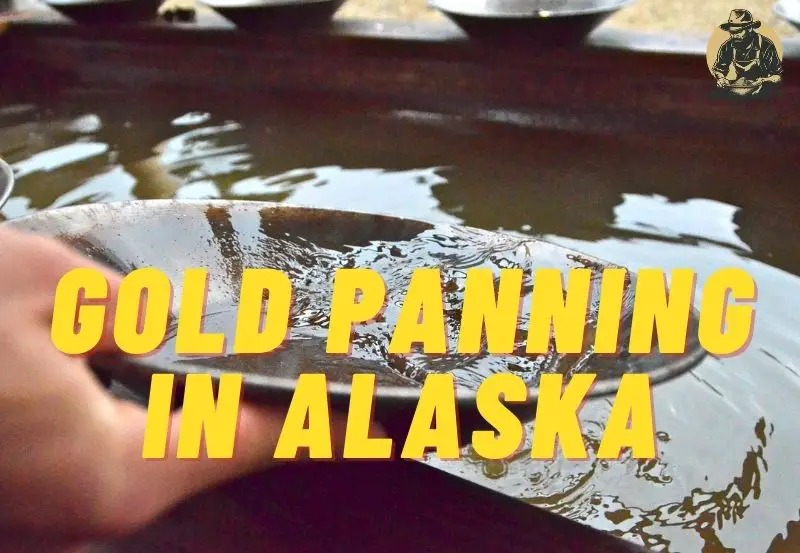Looking to strike gold in the heartland? Look no further, because we’ve got the inside scoop on all things gold panning in Oklahoma. Whether you’re a novice prospector or a seasoned expert, this article will provide you with the top tips and prime locations to maximize your chances of finding that precious gold. With the year 2024 just around the corner, it’s time to dust off your pans and get ready to embark on a gold mining adventure like no other. So grab your hat, put on your hiking boots, and let’s explore the golden opportunities awaiting you in Oklahoma.
The History of Gold Panning in Oklahoma
Early Discoveries
Gold panning in Oklahoma traces its roots back to the 19th century when early prospectors first discovered gold in the state. While Oklahoma may not be widely known for its gold deposits, there have been significant discoveries throughout the years. The first documented discovery was made in the Wichita Mountains in 1872, sparking a brief gold rush. However, the deposits were not substantial enough to sustain mining operations for an extended period.
Boom and Bust Periods
Following the initial gold rush, Oklahoma experienced boom and bust periods in gold mining. Prospectors flocked to the state in search of the precious metal during times when the price of gold was high. However, when prices inevitably dropped, many mining operations were forced to shut down. This pattern continued throughout the late 19th and early 20th centuries, limiting the long-term viability of gold mining in Oklahoma.
Current State of Gold Panning
Today, gold panning in Oklahoma is pursued primarily by recreational enthusiasts rather than commercial mining operations. While the state does not have the same abundance of gold as other regions, there are still ample opportunities for those interested in trying their hand at panning. With proper research, equipment, and technique, you can still find gold in Oklahoma’s rivers and streams.
Regulations and Permits for Gold Panning in Oklahoma
Laws and Regulations
Before heading out to try your luck at gold panning in Oklahoma, it is essential to familiarize yourself with the applicable laws and regulations. Most of the state’s rivers and streams have public access, allowing recreational prospecting without the need for a mining claim. However, it is crucial to respect private property rights and obtain the necessary permits if required.
Permit Requirements
While a mining claim is typically not required for recreational gold panning in Oklahoma, certain areas may have specific permit requirements. It’s important to check with local authorities or the Oklahoma Department of Mines to ensure you are in compliance with any regulations. Obtaining the necessary permits not only ensures you are abiding by the law but also protects Oklahoma’s natural resources for future generations.
Safety Precautions
When engaging in gold panning activities in Oklahoma, it is crucial to prioritize safety. Always let someone know of your plans and expected return time. While gold panning itself is generally safe, accidents can still occur. Be mindful of your surroundings, especially when near bodies of water, and take precautions to prevent falls or other accidents. Additionally, be aware of potential wildlife encounters and take appropriate measures to ensure your safety.
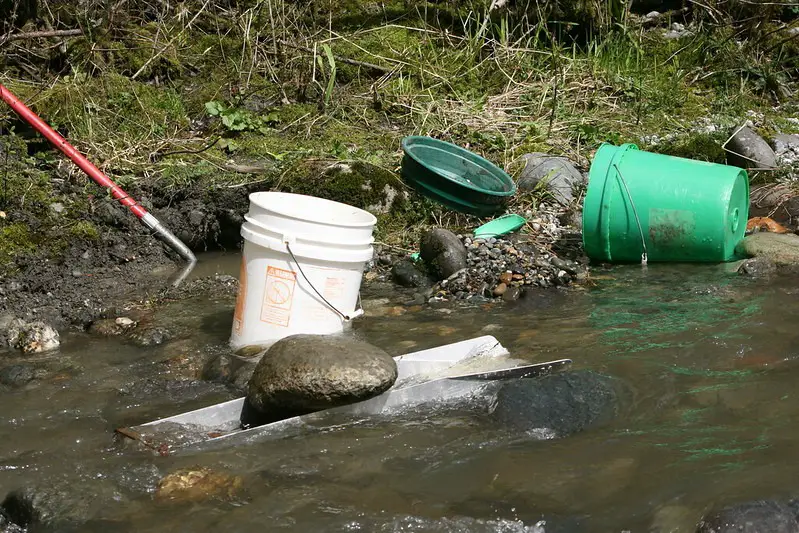
Choosing the Right Equipment for Gold Panning
Gold Pans
The first and most essential piece of equipment for gold panning is a gold pan. These shallow, wide-bottomed pans are designed to catch and retain heavier materials, including gold. When choosing a gold pan, opt for one made of durable material, such as metal or plastic, and select a size that suits your preference and comfort level. It’s also helpful to choose a gold pan with riffles or grooves on the bottom to aid in trapping gold.
Classifiers
To improve your gold panning efficiency, consider using classifiers. These are screens or sieves with different-sized holes that allow you to separate larger materials from the smaller ones. By using classifiers, you can save time and focus your efforts on processing the smaller, more likely gold-bearing materials.
Sluice Boxes
For more advanced gold panning, a sluice box can greatly increase your chances of success. A sluice box is a long, narrow trough that uses flowing water to wash away lighter materials while capturing heavier materials, such as gold. Sluice boxes come in various sizes and styles, so be sure to choose one that is suitable for the location and conditions you plan to pan in.
Suction Dredges
Suction dredges are powerful tools used by experienced gold prospectors to extract gold from riverbeds and stream bottoms. These machines work by sucking up gravel and sediment from the riverbed and running it through a sluice box, where gold can be captured. However, it is essential to familiarize yourself with local regulations regarding the use of suction dredges, as they may be restricted in certain areas.
Metal Detectors
Another useful tool for gold prospecting is a metal detector. While not specifically designed for gold panning, metal detectors can help you locate buried gold nuggets or flakes that may be missed by other methods. When using a metal detector, be sure to choose one that is specifically designed for gold prospecting, as different models may have different capabilities and features.
Tips for Successful Gold Panning
Researching Geological Maps
Before venturing out to pan for gold in Oklahoma, it is crucial to do your research. Take the time to study geological maps and learn about the areas known for gold deposits. Look for areas with a history of gold discoveries and favorable geological conditions for gold accumulation. This information will guide you to the most promising locations for successful gold panning.
Sampling Techniques
When you arrive at a potential gold panning location, it’s important to employ sampling techniques to determine the presence of gold. Scoop up small amounts of gravel or sediment from various spots along the river or stream and carefully inspect them for signs of gold. By sampling different areas, you can identify the most productive spots to focus your efforts.
Learning to Identify Gold
Identifying gold in its raw form can be challenging, especially for beginners. Take the time to educate yourself on the characteristics and appearance of gold. Familiarize yourself with how it looks in different types of rock and soil. This knowledge will help you distinguish gold from other minerals and materials commonly found in the same area.
Working with a Partner
Gold panning can be an enjoyable and rewarding experience, but it’s always best to have a partner. Not only does panning with a partner provide safety and companionship, but it also allows for more efficient prospecting. By working together, you can cover more ground, share tips and techniques, and increase your chances of finding gold.
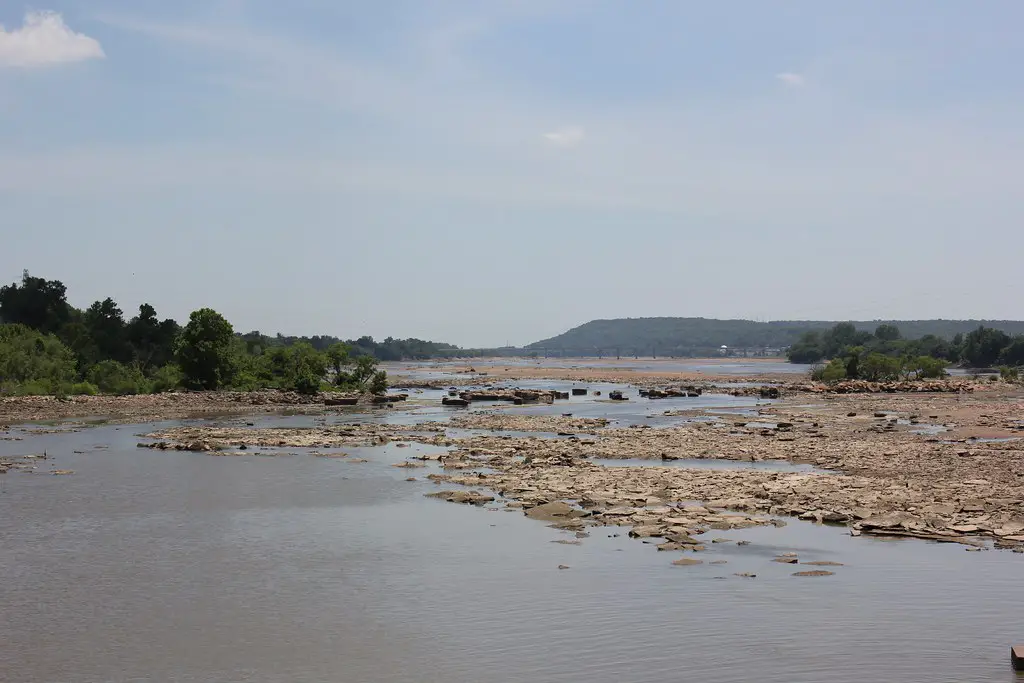
Prime Locations for Gold Panning in Oklahoma
Arkansas River
The Arkansas River is one of the prime locations for gold panning in Oklahoma. This river has a rich history of gold discoveries and continues to be a popular destination for prospectors. The best sections to pan on the Arkansas River are typically found near old gold mining sites or areas with known gold deposits. The river’s gravel bars and sandy areas are excellent places to search for gold.
Cimarron River
The Cimarron River is another promising location for gold panning in Oklahoma. This river winds its way through the state, offering numerous opportunities for prospectors. The best sections to pan on the Cimarron River are often found in the upper reaches and tributaries where gold can accumulate. Focus on areas with exposed bedrock, gravel bars, and deep pockets where gold may settle.
Deep Fork River
The Deep Fork River is known for its gold-bearing sands and gravels, making it an attractive destination for gold panners in Oklahoma. Look for gravel bars and areas where the river has changed its course, exposing potential gold deposits. It’s also advisable to concentrate on bends and areas where the river slows down, allowing gold to settle.
Canadian River
The Canadian River is renowned for its gold panning opportunities in Oklahoma. This river cuts through the heart of the state, offering numerous locations to try your luck. Look for areas where the river has eroded banks or created gravel bars, as these are prime spots for finding gold. Additionally, sections near old mining sites or known gold deposits can be particularly productive.
Arkansas River: Panning Tips and Techniques
Best Sections to Pan
When panning on the Arkansas River, focus on areas near old gold mining sites or regions where gold deposits have been documented. The gravel bars and sandy areas along the river are generally the most productive for gold panning. Examine the riverbanks for any exposed bedrock or areas with visible signs of previous mining activity.
Recommended Equipment
For gold panning on the Arkansas River, a gold pan and classifier are essential tools. Consider using a sluice box for more advanced prospecting. When choosing equipment, opt for larger pans and classifiers to handle the larger gravel found in the area. A metal detector can also be beneficial for locating buried gold nuggets.
Effective Panning Techniques
To maximize your chances of finding gold on the Arkansas River, employ effective panning techniques. Begin by filling your gold pan with gravel and sediment from the river. Submerge the pan in the water and vigorously shake it to wash away lighter materials. Gradually tilt the pan to allow water to carry away lighter materials, leaving the heavier gold behind. Carefully inspect the remaining materials for any signs of gold.
Cimarron River: Panning Tips and Techniques
Best Sections to Pan
When panning on the Cimarron River, focus your efforts on the upper reaches and tributaries where gold can accumulate. Look for exposed bedrock, gravel bars, and deep pockets where gold may settle. Additionally, areas with visible signs of a change in the river’s course, such as bends, can be highly productive.
Recommended Equipment
For panning on the Cimarron River, a gold pan and classifier are essential tools. Consider using a sluice box to increase your chances of finding gold. Opt for larger pans and classifiers to handle the larger gravel commonly found in the area. A metal detector can also be useful for locating hidden gold deposits.
Effective Panning Techniques
To effectively pan for gold on the Cimarron River, begin by filling your gold pan with gravel and sediment from the river. Submerge the pan in the water and agitate it to wash away lighter materials. Gradually tilt the pan to allow water to carry away lighter materials, leaving the heavier gold behind. Carefully examine the remaining materials for any signs of gold.
Deep Fork River: Panning Tips and Techniques
Best Sections to Pan
For successful gold panning on the Deep Fork River, concentrate your efforts on gravel bars and areas where the river has changed its course. These locations are ideal for the accumulation of gold. Bends in the river and slower-flowing sections are particularly promising, as gold can settle in these areas.
Recommended Equipment
When panning on the Deep Fork River, a gold pan and classifier are essential tools. Consider using a sluice box for more efficient prospecting. Opt for larger pans and classifiers to handle the larger gravel typically found in the area. A metal detector can also be helpful for uncovering hidden gold deposits.
Effective Panning Techniques
To effectively pan for gold on the Deep Fork River, fill your gold pan with gravel and sediment from the river. Submerge the pan in the water and vigorously agitate it to wash away lighter materials. Gradually tilt the pan to allow water to carry away lighter materials, leaving the heavier gold behind. Thoroughly inspect the remaining materials for any signs of gold.
Canadian River: Panning Tips and Techniques
Best Sections to Pan
When panning on the Canadian River, focus on areas where the river has eroded its banks or created gravel bars. These locations offer excellent opportunities for finding gold. Additionally, sections near old mining sites or known gold deposits can be highly productive and are worth exploring.
Recommended Equipment
For panning on the Canadian River, a gold pan and classifier are necessary tools. Consider using a sluice box to increase your chances of finding gold. Select larger pans and classifiers to handle the larger gravel commonly found in the area. A metal detector can also be beneficial for uncovering buried gold nuggets.
Effective Panning Techniques
To effectively pan for gold on the Canadian River, fill your gold pan with gravel and sediment from the river. Submerge the pan in the water and agitate it to wash away lighter materials. Gradually tilt the pan to allow water to carry away lighter materials, leaving the heavier gold behind. Carefully examine the remaining materials for any signs of gold.
Finding Gold Panning Clubs and Events in Oklahoma
Joining Local Clubs
If you are interested in gold panning in Oklahoma, consider joining local gold panning clubs. These clubs offer a wealth of knowledge, resources, and opportunities to connect with fellow enthusiasts. By joining a club, you can learn from experienced prospectors, gain access to exclusive panning locations, and participate in group outings and events.
Attending Gold Panning Events
Attending gold panning events is another great way to enhance your skills and expand your knowledge. Many clubs and organizations host regular events, including workshops, competitions, and outings dedicated to gold panning. These events provide an opportunity to learn from experts, share experiences with fellow prospectors, and discover new prime gold panning locations.
Learning from Experienced Prospectors
One of the best ways to improve your gold panning skills is to learn from experienced prospectors. Whether through joining a club, attending events, or connecting with experienced individuals, seeking guidance from those who have already mastered the craft can significantly enhance your prospecting abilities. Experienced prospectors can offer invaluable tips, advice, and techniques to help you become a more successful gold panner.
In conclusion, while gold panning in Oklahoma may not have the same level of excitement or abundance as other regions, it still offers plenty of opportunities for recreational prospectors. By following the regulations, obtaining necessary permits, and using the right equipment, you can have a rewarding experience searching for gold in Oklahoma’s rivers and streams. Remember to conduct thorough research, practice effective panning techniques, and stay safe during your gold panning adventures. Happy prospecting!
Basic Gold Panning Starter Kit
| Product | Description | Link |
|---|---|---|
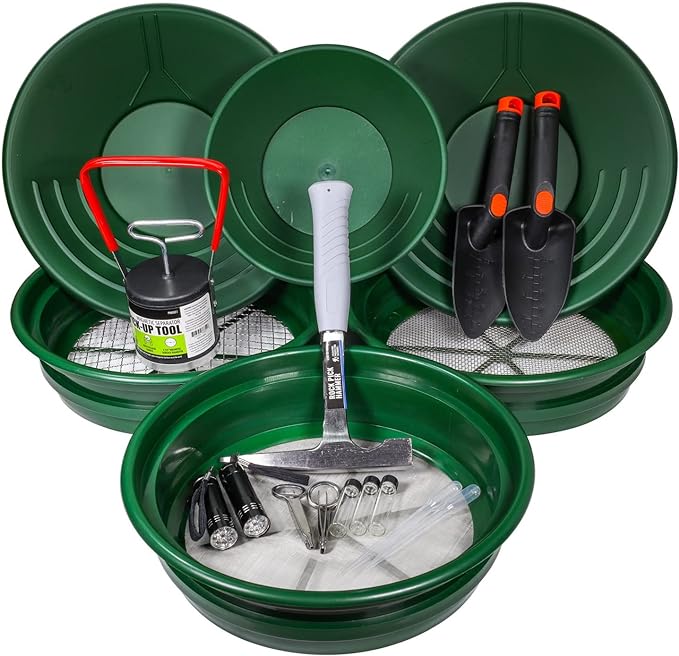 |
Deluxe Gold Panning Kit | Check it out on Amazon |
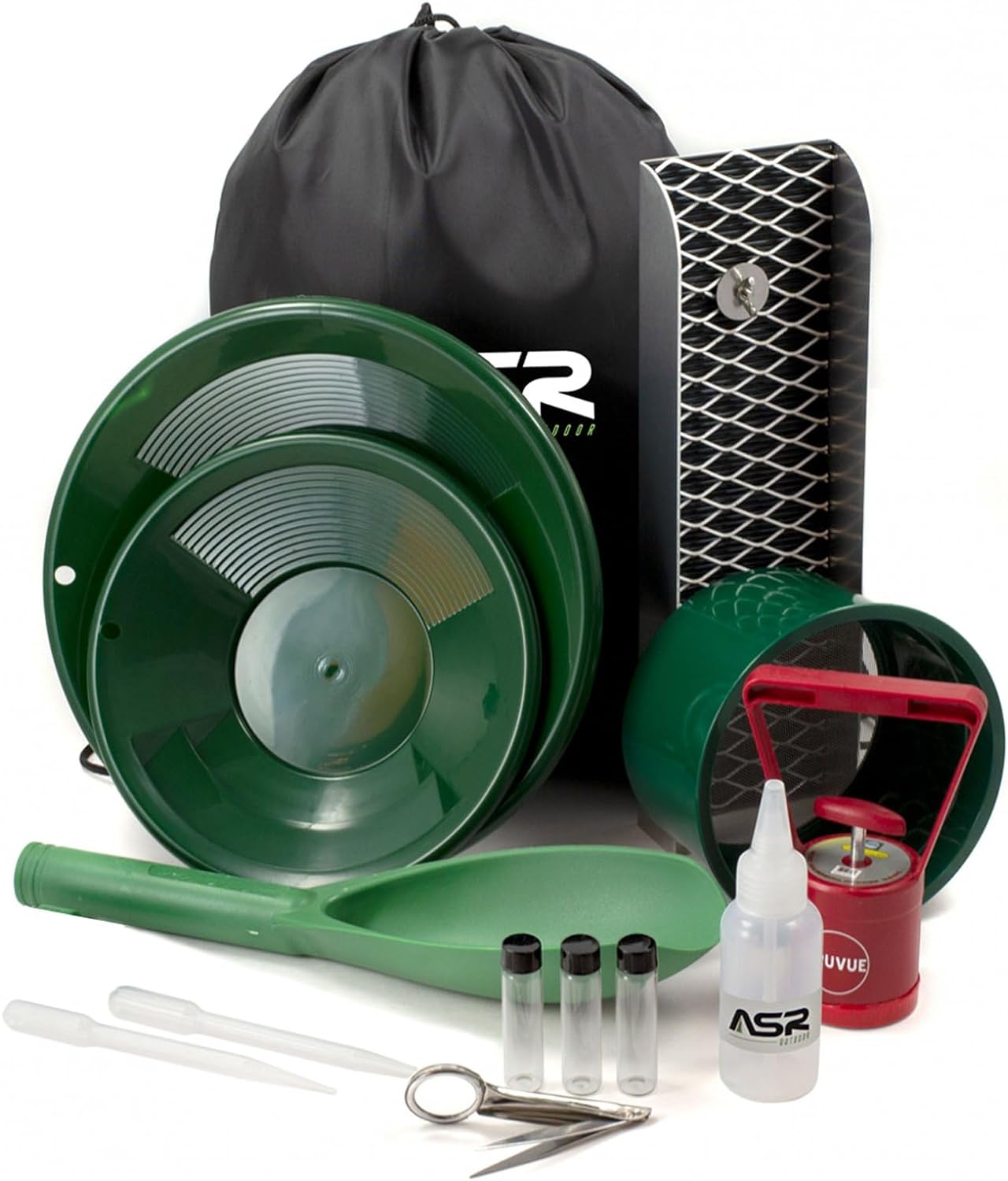 |
Advanced Gold Panning Set | Check it out on Amazon |
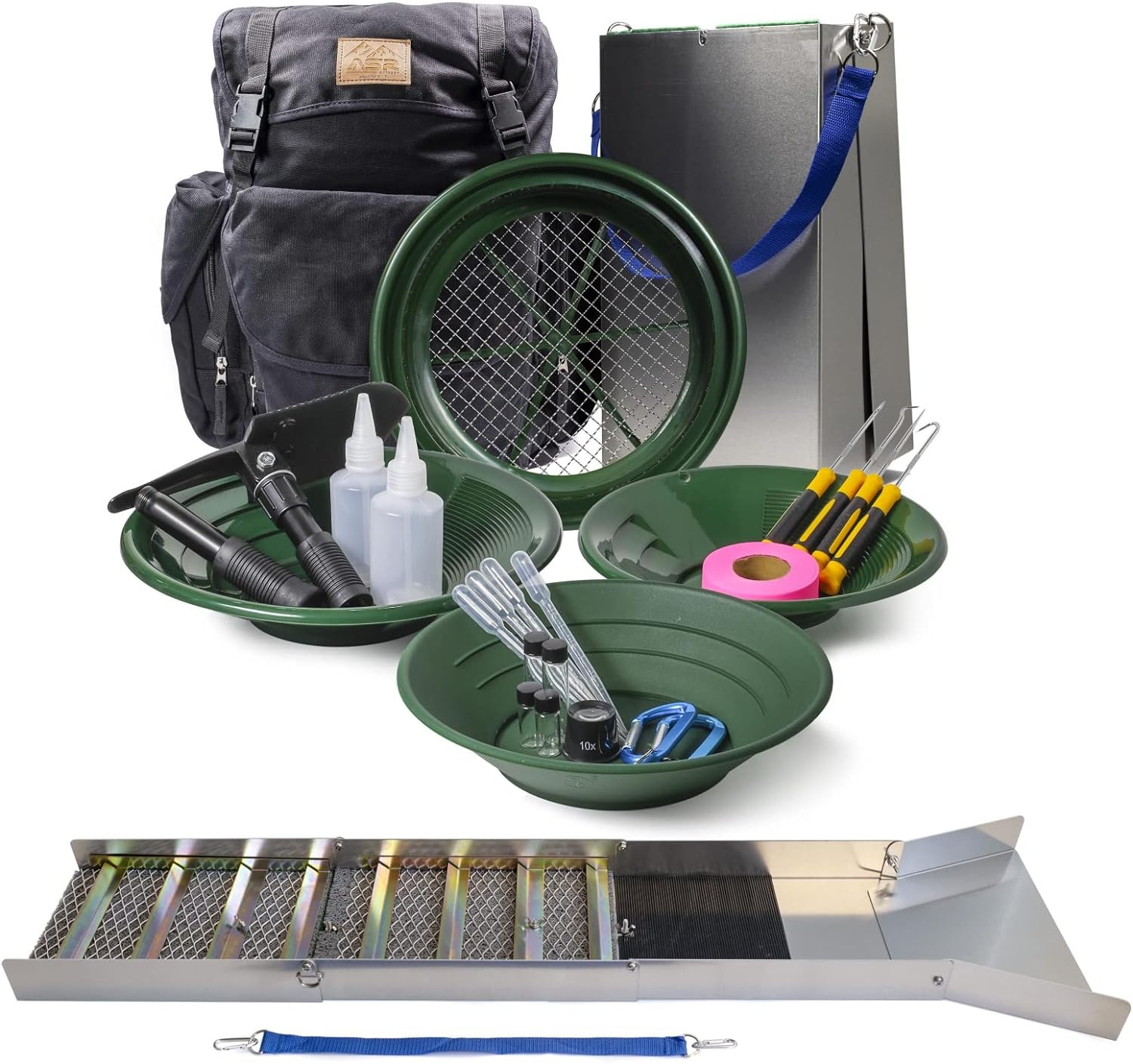 |
Professional Gold Panning Equipment | Check it out on Amazon |
Disclosure: As an Amazon Associate, I earn from qualifying purchases at no extra cost to you, thank you for your support.
